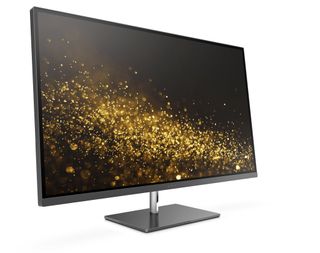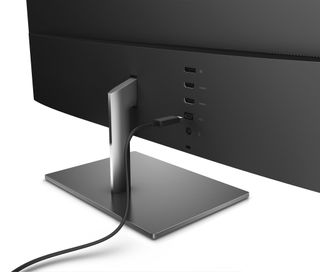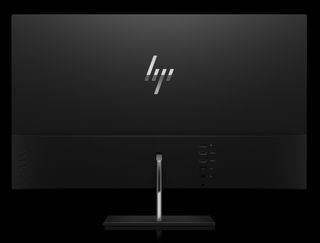HP brings 4K power to the all-new ENVY 27 Display

Last year HP released a behemoth of a screen with its 32-inch QHD ENVY display. This year, the size comes down a bit due to customer feedback, but the resolution is bumped to an impressive 4K resolution while still hitting an affordable price tag of $499.
The brand new HP ENVY 27 features dual HDMI ports, Display Port, and an optional USB Type-C port with video and power delivery along with included cables.

The display itself sports 4K 3840x2160 resolution with IPS panel technology and a 178-degree viewing angle. There is also an impressive 99% sRGB color gamut, low Blue Light settings for Night and Reading usage, and AMD FreeSync technology.
| Category | Specs |
|---|---|
| Size | 27-inch display |
| Panel Type | IPS LED Backlit |
| Surface treatment | Advanced haze |
| Brightness (typical) | 350 nits |
| Response time | Panel native 14ms |
| Color support | Up to 16.7M colors |
| VESA mounting | VESA capable |
| Aspect ratio | 16:9 |
| Contrast ratio | 10M:1 |
| Resolution | 3840 x 2160 |
| Connectivity | 1 x HDMI 2.0 1 x HDMI 1.4 1 x USB-C (power del up to 60W) |
| Exterior color | Black Onyx |
| Technology | 99% sRGB color accuracy AMD FreeSync technology |
HP also knows consumers want thin bezels so the ENVY sports 6mm bezels around a display that is only 15mm thick. They also redesigned the stand to make the screen look like it's "floating."

While not quite as impressive as my HP Spectre 32-inch LED display the ENVY line certainly steps it up a notch.
Availability should start later this month for select markets with a starting price of $449 for the non-USB Type-C variant. Tossing in Type-C will bump the price to $499.
Get the Windows Central Newsletter
All the latest news, reviews, and guides for Windows and Xbox diehards.

Daniel Rubino is the Editor-in-chief of Windows Central. He is also the head reviewer, podcast co-host, and analyst. He has been covering Microsoft since 2007, when this site was called WMExperts (and later Windows Phone Central). His interests include Windows, laptops, next-gen computing, and watches. He has been reviewing laptops since 2015 and is particularly fond of 2-in-1 convertibles, ARM processors, new form factors, and thin-and-light PCs. Before all this tech stuff, he worked on a Ph.D. in linguistics, watched people sleep (for medical purposes!), and ran the projectors at movie theaters because it was fun.
